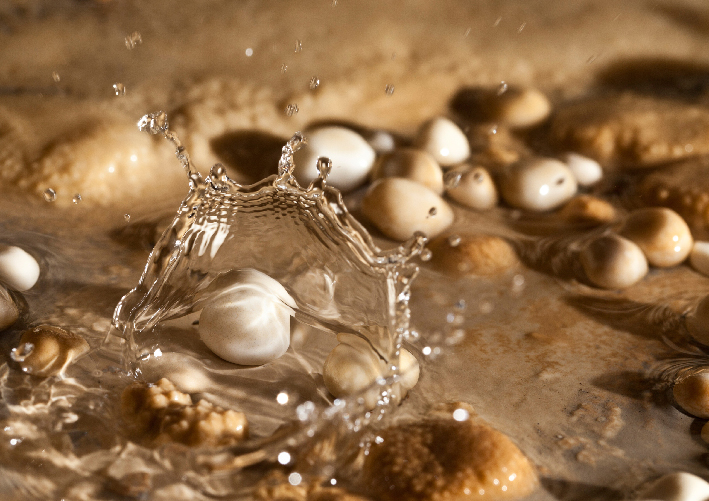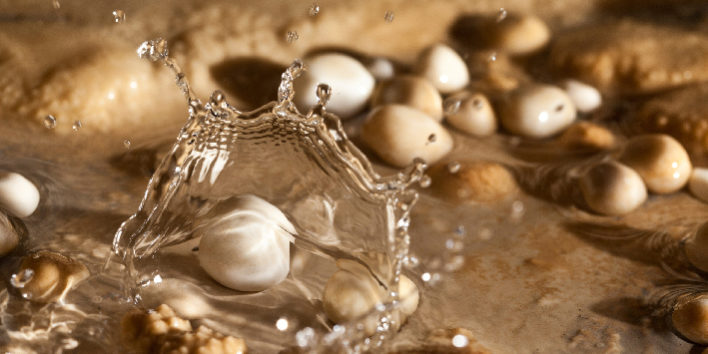English below

Le perle di grotta, o pisoliti, sono concrezioni, generalmente sferoidali, che anziché essere attaccate alle pareti o al pavimento come quelle da splash, si accrescono libere. Sono sempre costituite da strati concentrici di calcite i cui cristalli, quasi sempre microscopici, si accrescono radialmente attorno ad un nucleo che può essere costituito da un granello di sabbia, un cristallo od un minuscolo sassolino.
Si formano all’interno di particolari vaschette nelle quali un continuo ed intenso stillicidio impedisce a queste concrezioni di saldarsi tra loro o di attaccarsi al pavimento. Se però le loro dimensioni aumentano in misura eccessiva, a causa del peso non possono più essere mosse dalle gocce e finiscono per saldarsi sia tra loro che alla roccia sulla quale poggiano. In questo caso la loro superficie, che in origine era perfettamente levigata, diviene ruvida a causa dei macrocristalli di calcite che finiscono per rivestirle, trasformandole in normali concrezioni da splash. Queste ultime, se vengono abbandonate dall’acqua, diventano opache, mentre le perle di grotta cresciute liberamente sono generalmente bianchissime, microcristalline e, anche se restano all’asciutto, mantengono una lucentezza simile a quella della porcellana smaltata.
Le dimensioni delle perle variano da meno di un millimetro a un massimo di due o tre centimetri; la loro forma, talvolta perfettamente sferica, può essere irregolare (ma sempre tondeggiante) o addirittura cubica, ma sempre con gli spigoli e le cuspidi smussate.
All’interno della Grotta del Vento le perle di grotta, non visibili dai percorsi turistici, sono presenti soprattutto nella Diramazione dell’Infinito e lungo i percorsi avventura.

Foto: Mario Verole-Bozzello
CAVE PEARLS
Cave pearls are generally spheroidal formations which, instead of being attached to the walls or floor like the splash ones, grow free. They are always made up of concentric layers of calcite whose crystals, usually always microscopic, grow radically around a nucleus which can be made up of a grain of sand, a crystal or a minute pebble.
They form inside particular pools where a continuous and intense dripping prevents these formations from sticking to each other or onto the floor. If however their dimensions increase excessively, because of their weight they cannot be moved by the drops any more and end up sticking to each other and onto the rock where they sit. In this case their surface, which in origin was perfectly smooth, becomes rougher because of the macro crystals of calcite which end up covering them, transforming them into normal splash formations. These latter, if abandoned by water, become opaque, whereas the cave pearls that have grown freely are generally very white, micro crystalline and, even if they remain dry, maintain a brightness similar to porcelain.
The dimensions of the pearls vary from less than a millimetre to a maximum of two or three centimetres; their shape, sometimes perfectly spherical, can be irregular (but always round) or even cubic, but always with rounded corners and cuspids.
Inside the Grotta del Vento the cave pearls which cannot be seen on the touristic itineraries are mostly in the Branch of Infinity and along the adventure routes.








